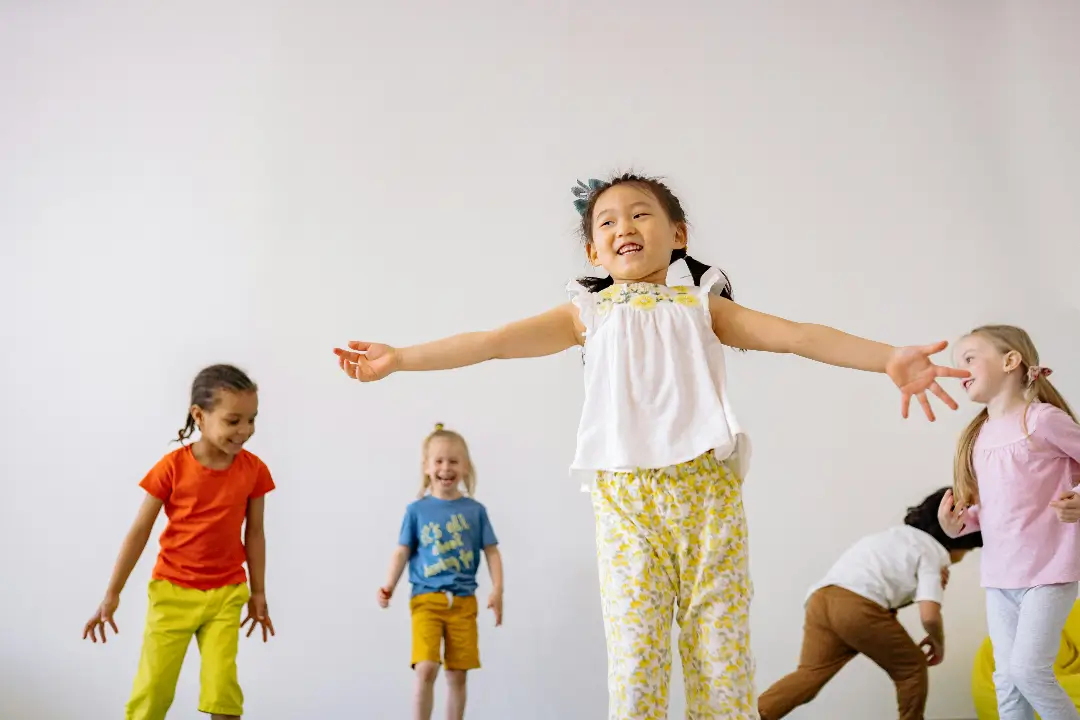How to incorporate music into P.E lessons
Nov 30, 2024


Kas
Music is a such an incredible tool to use in the classroom, especially in physical education lessons. I was fortunate to have a mentor who implemented music in every one of his P.E lesson, from observing this and implementing it myself over the course of many years of teaching across all year levels R-10 I have seen the benefits it brings to my students.
Group activities with music increase social bonding and engagement, particularly in dance or rhythm-based exercises (Tarr et al., 2016).
If you’re looking for an easy way to make your lessons more engaging and create a positive atmosphere for students, music is a fantastic tool. There are many ways to incorporate music into education, and specific approaches you can use in your classroom to achieve your desired outcomes. In this article, we’ll discuss how music can be applied in a P.E. lesson and highlight some evidence-backed benefits that music offers for learning and student wellbeing.
Introducing music into your lessons doesn’t have to be complicated. Simply purchasing a small Bluetooth or wireless speaker that you can take to each lesson will give you the flexibility to use music in both indoor and outdoor activities. While you could use any type of music device (even non-wireless ones), I highly recommend investing in a wireless option, ideally from your school budget. It will make your life much easier when incorporating music into P.E. lessons!

Increases Participation and Enjoyment
Music greatly boosts student participation and engagement in your lessons. It’s one of the few things that every student enjoys. While individual preferences for music genres may vary, most students would prefer to have music playing during the lesson—even if it’s not their favorite song—rather than have no music at all. Music has the power to make any physical education activity more enjoyable, and students often increase their intensity as the music motivates them.
Even the less confident students or those waiting for their turn are drawn in by the music. They might dance, move in place, or at least “bop” along to the rhythm—music is infectious in the best possible way! As a P.E. teacher, seeing this kind of engagement lets me know that my students are enjoying themselves, feeling good, and fully involved. At a minimum, if this is the outcome of the lesson, it’s already a huge win for both the students and me as a teacher.
Of course, the ultimate goal is to create a better learning environment, one that encourages higher levels of engagement and facilitates improved learning outcomes through the use of music. However, there may be times when this goal is not fully realised in a lesson due to various factors, but the positive impact of music remains a valuable tool regardless.
Research indicates that activities paired with rhythmic music improve motor skills, particularly in children and adolescents (Zachopoulou et al., 2004).
If I can ensure my students associate a good time, fun and enjoyment when they come to P.E lessons that in itself will have far better long-term outcomes for the success of my P.E lesson down the track, in a way it’s an investment in that student. A positive association with a subject area will in most cases have a correlation with greater learning outcomes with that student.
Studies show that music, especially with a tempo matching the activity, can boost motivation and help students maintain pace during physical tasks (Karageorghis & Priest, 2012).

Positive Behaviour Reinforcement/ Behaviour Management
Music can be posed as a reward for good whole class behaviour. This may include if students are listening attentively during instruction time the whole class may gain the reward of having music during the activity. This strategy will ensure that students try their best to be attentive but most importantly keep their class mates accountable as if anyone is disruptive or distracting it could affect the wholes class ability to enjoy music during the lesson.
Another strategy that could be used is reward a team or student with a song request if they excel during the activity, display a high level of effort or show kindness and respectful behaviour during the lesson. This will be reinforcing positive class behaviour and a simple and easy reward for the teacher to facilitate and one that the whole class can enjoy the benefits of even though one student will get the reward of selecting a song.
How Music Benefits Learning
- Music activates multiple areas of the brain, improving memory retention and recall. Studies show that musical rhythm and melody create patterns that make information easier to remember.
- Group activities with music increase social bonding and engagement, particularly in dance or rhythm-based exercises (Tarr et al., 2016).
- Exposure to music stimulates brain development, improving critical thinking and problem-solving skills. Research has linked musical engagement to higher scores in math, reading, and verbal skills due to enhanced neural connectivity.
- Music has calming effects, reducing anxiety and creating an optimal state for learning. Low-tempo music can decrease cortisol levels, helping students focus better during tasks.
- Music enhances emotional connection, making lessons more engaging and meaningful for students. Emotional engagement through music supports motivation and fosters a deeper connection to the material being learned.
- Music integrates auditory and kinaesthetic learning styles, appealing to diverse learners. Multisensory approaches using music help reinforce concepts, especially for younger children or students with learning differences.
Want a affordable but high-quality speaker to use for your lessons? Click here
Helpful Resources:
- Fundamental Movement Skills: Flash Cards + Circuit
- Coloured Cones For Teaching P.E! (Amazon)
- Coloured Sit Spots for behaviour management! (Amazon)
- Awesome Teacher Planner! (Amazon)
- How to create a better work life balance?
- Why are minor games important for students to learn?
- Emotional Regulation Posters
- Assessments for P.E- Ready to go
- What are invasion games?
- First time teaching P.E? Heres where to start!
Sources:
- Karageorghis, C. I., & Priest, D. L. (2012). Music in sport and exercise: An update on research and application. The Sport Journal, 15(3), 1-5.
- Szabo, A., Small, A., & Leigh, M. (1999). The effects of slow- and fast-rhythm classical music on progressive cycling to voluntary physical exhaustion. The Journal of Sports Medicine and Physical Fitness, 39(3), 220-225.
- Ho, Y. C., Cheung, M. C., & Chan, A. S. (2003). Music training improves verbal but not visual memory: Cross-sectional and longitudinal explorations in children. Neuropsychology, 17(3), 439-450.
- Schellenberg, E. G. (2004). Music lessons enhance IQ. Psychological Science, 15(8), 511-514.
- Knight, W. E., & Rickard, N. S. (2001). Relaxing music prevents stress-induced increases in subjective anxiety, systolic blood pressure, and heart rate in healthy males and females. Journal of Music Therapy, 38(4), 254-272.
- Hargreaves, D. J., & North, A. C. (1999). The functions of music in everyday life: Redefining the social in music psychology. Psychology of Music, 27(1), 71-83.
- Hallam, S. (2010). The power of music: Its impact on the intellectual, social, and personal development of children and young people. International Journal of Music Education, 28(3), 269-289.
